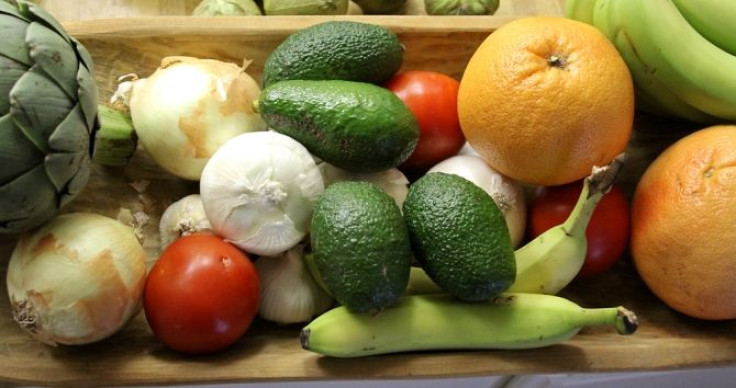Health Benefits of Fruits and Vegetables

It is not big secret that a healthy diet is a cornerstone of good health. Our body uses the nutrients in food to keep everything in good working order, so it makes sense that giving it adequate amounts of the vitamins, minerals and other substances found in food would help it do its job as successfully as possible.
The Mediterranean diet, for example, has been linked with a decreased risk of several serious diseases and a high fruit and vegetable intake is probably a major contributing factor-on average, it provides 9 servings a day.
You have probably heard a million times to eat copious amounts of fruits and vegetables because they are good for you; even if you know this, you may not eat enough anyway. I am not providing any new revelations, but hopefully the following information actually detailing these benefits will give you the kick you need to actually take this wise advice.
Cardiovascular Benefits
Heart disease is a major problem in the United States and for most people, it results from poor lifestyle choices; this means that by making better choices, you can achieve a better state of health. That is pretty good news. If you are familiar with the DASH (dietary approaches to stop hypertension) diet, you may know that the recommendations came from a large-scale study examining the effects of plant foods, low-fat dairy and reduced fat intake on hypertension. The results were pretty significant-simply following this diet resulted in blood pressure reductions on par with medication.
One of the largest studies to ever examine the relationship between fruit and vegetable intake and cardiovascular disease, a Harvard study which tracked 110,000 men and women for 14 years, found high intake was correlated with reduced risk of cardiovascular disease. The highest intake group (8 servings or more a day) was 30 percent less likely to suffer a heart attack or stroke than the lowest intake group (1.5 servings or less daily.) It seems that certain fruits and vegetables were particularly beneficial, such h as leafy greens, cruciferous vegetables (broccoli, cabbage, cauliflower) and citrus fruits. Several other long-term studies in Europe and the United States produced similar findings.
Reduced Risk of Cancer
If there is one disease people fear most, it is probably cancer. It is a complex disease, and as of yet, there is no guaranteed way to prevent it. However, continued research on the link between this disease and issues of lifestyle, is showing that things like a healthy diet and regular physical activity may be major players in reducing risk.
According to Harvard University, research outlining the relationship with general fruit and vegetable intake and risk of developing cancer is unclear, with the most reliable types of studies for examining the development of disease over time among initially healthy individuals, showing inconsistent results. What the studies have seemed to clearly demonstrate however is that certain types of foods have been linked with decreased risk of developing certain types of cancers. For example, non-starchy vegetables such as broccoli, leafy greens, onions and garlic as well as a variety of fruits may reduce risk of developing cancers of the lung, stomach, esophagus, mouth and throat. Tomatoes and other lycopene-rich foods may reduce the risk of prostate cancer.
Getting More Fruits and Vegetables in Your Diet
What we choose to put in our mouth is one of those things that we have complete control over; we cannot blame advertising, the abundance of fast food or our busy schedules for our poor eating habits. It all comes down to choice.
Leave fruit out where it is easily visible so you will be more likely to eat some. Get some variety in your diet by trying fruits and vegetables you have not eaten before-there is quite an abundance of plant foods with a variety of flavors and textures. Get a blender and make some delicious fruit shakes, just mixe with some water and ice and you have a delicious, healthy and refreshing treat. Make an effort to slowly introduce more fruits and vegetables into your diet and as you get used to eating them more, something amazing will begin to happen-you will actually start craving healthy food and want to eat it. Imagine that! To reap the most benefits, eat a variety from across the color spectrum-each group has its unique benefits.
Kelli Cooper is a freelance writer who specializes in health and wellness content. If you are looking for tasty ways to increase your fruit and vegetable intake, check out Proctor Silex blenders to make some delicious and healthy shakes.



























